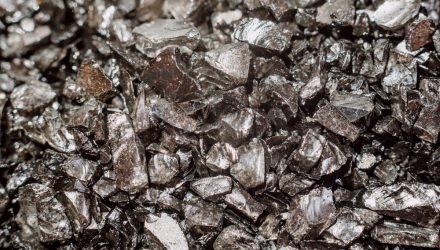Rare earth minerals are essential to producing an array of clean energy technologies, and with demand for the latter soaring, the rare earths investment thesis is experiencing a renaissance.
Following a long period of anonymity, the VanEck Vectors Rare Earth/Strategic Metals ETF (REMX) is back in style. REMX, which turns 11 years old next month, now has $1.1 billion in assets under management — a testament to a broad audience of investors discovering the importance of rare earths in the clean energy equation.
More importantly, REMX is up 78.38% year-to-date. That’s confirmation that the fund’s 20 member firms are positively correlated to demand trends facilitated by the renewable energy industry. After all, minerals such as lithium, nickel, cobalt, manganese, graphite, rare earths, copper, silicon, and silver are pivotal pieces in the global decarbonization puzzle.

“The minerals intensity of clean energy technologies may accelerate demand by as much as four to six times, depending on the technology,” says VanEck analyst Charl Malan. “An offshore wind plant requires thirteen times more mineral resources than a similarly sized gas-fired power plant. The use of individual minerals such as cobalt, graphite and lithium (to name a few) could jump some 21, 25 and 42 times, respectively, during the next decade as the result of an aggressive push for clean energy use.”
There’s a long-term case for REMX as well, one buoyed by a variety of global governments targeting ambitious carbon reduction goals and other renewable energy concepts. For example, the Biden administration is pushing for broader adoption of solar energy while other governments are embracing wind power, enhancing electrical grids, and adopting other carbon-reduction strategies. All of that leads to more demand for minerals.
“As the energy transition continues to accelerate, it seems feasible that decarbonization becomes the leading consumer of minerals. In other words, the global economy is transforming from one that is highly dependent on fossil fuels (coal, natural gas and crude oil) for its energy needs to one that is reliant on minerals,” adds Malan.
REMX has some other angles to consider, including solid lithium exposure. That’s meaningful because lithium is not only a vital component in the production of batteries for electric vehicles, but it’s also used to manufacture wind turbines.
“An offshore wind plant requires thirteen times more mineral resources than a similarly sized gas-fired power plant. The use of individual minerals such as cobalt, graphite and lithium (to name a few) could jump some 21, 25 and 42 times, respectively, during the next decade as the result of an aggressive push for clean energy use,” notes Malan.
For more news, information, and strategy, visit the Beyond Basic Beta Channel.
The opinions and forecasts expressed herein are solely those of Tom Lydon, and may not actually come to pass. Information on this site should not be used or construed as an offer to sell, a solicitation of an offer to buy, or a recommendation for any product.







